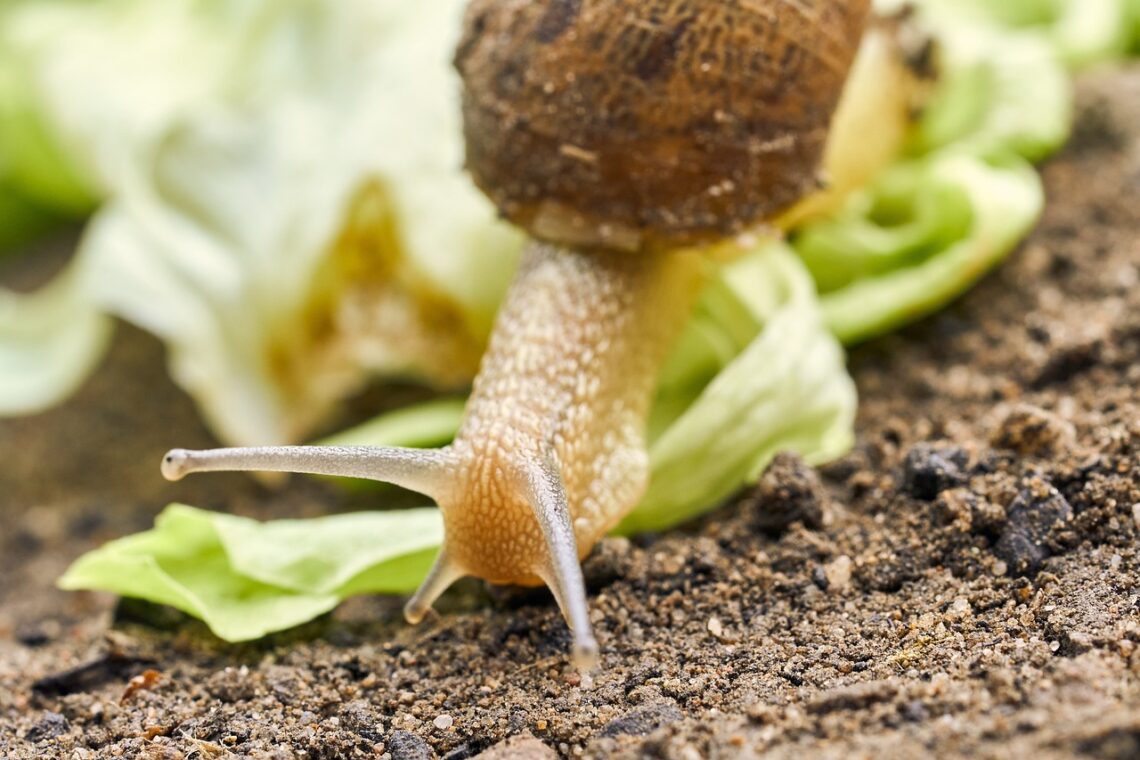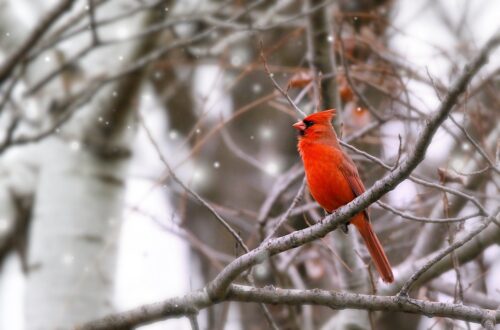Simplify garden pest control with these effective and all-natural pest barriers for gardens and lawns!
Insects, deer, rabbits, voles, and other garden pests can do a lot of damage to vegetables, fruit, herbs, and flowering plants. But just because something is nibbling on your tomatoes or gnawing on your tree bark doesn’t mean you need to reach for pesticides or call garden pest control professionals. As you’ll see, many garden pests can be managed all naturally using simple pest barriers and you’ll find some of my favorite pest barrier products for organic gardens in the list below!
Affiliate disclosure: As an Amazon Associate, I may earn commissions from qualifying purchases.
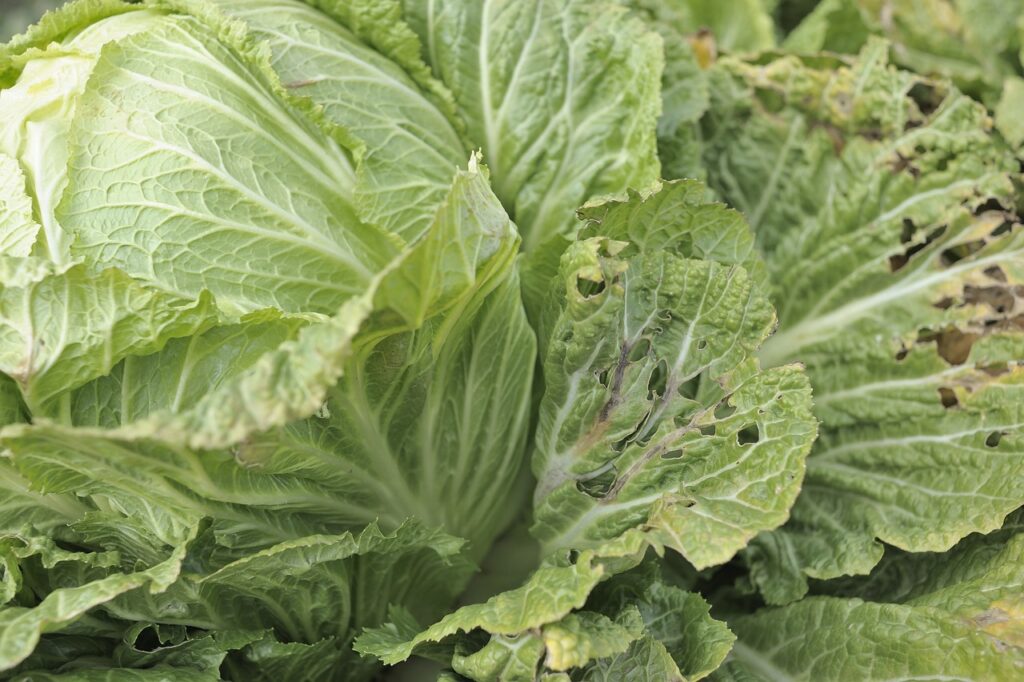
11 Pest Barriers for Garden Pest Control
Pest barriers are generally quite pest-specific, so you’ll want to choose a barrier product that’s well-suited for the types of pests you’re trying to deter. Some barriers are also smaller and more budget-friendly than others, which are also important considerations. One great thing about pest barriers is that most of them can be used over and over and they’re safer for pollinators and other wildlife than pesticide products!
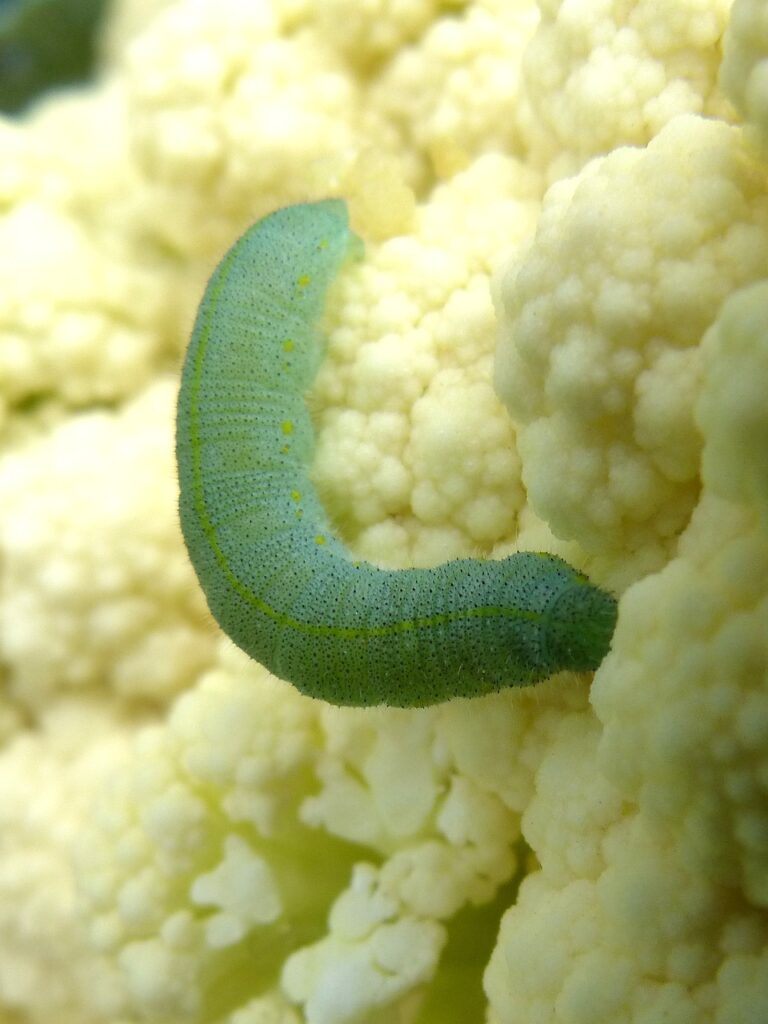
1. Row Covers and Grow Tunnels
Best for: Insect pests, like cabbage loopers and cucumber beetles
Grow tunnels and row covers for plants can be used for season extension, but they’re handy for pest control too. Garden row covers are typically made of a lightweight fabric, which keeps out pests while allowing light and water to penetrate. Row covers can be draped directly over plants and secured with landscape staples, or they can be attached to grow tunnel hoops to give plants more room to grow.
For best results, row covers and grow tunnels should be installed at the beginning of the growing season, as soon as you move plants out into your garden. The goal here is to keep pests from landing on your plants and laying eggs, so you want to make sure these barriers are in place as early as possible. These structures are even more effective against soil-dwelling pests when they’re paired with crop rotation.
Tip: For a budget-friendly option, try making your own row cover hoops out of hula hoops from the dollar store! Cut the hoop in half to create a tunnel shape and secure it to the soil by threading the cut hoop ends over rebar.

2. Fencing
Best for: Larger critters, like deer and groundhogs
In the gardening world, pest fencing can vary significantly depending on the types of pests you’re trying to deter. For instance, non-electric fencing for deer needs to be quite tall (at least 8’ high!), while fencing for burrowing animals is usually buried a foot or more beneath the soil and angled outwards to make digging difficult.
One good thing about fencing is that it is usually a permanent structure that can protect your garden for many years to come. But the drawback is that fencing can be pricey at first and it may be difficult to install as well. However, if you know that deer and other larger animals visit your garden often, it may be worth the investment!
Tip: If you don’t have the budget for fencing just yet, motion activated sprinklers can work against pests too. For best results, move the sprinklers around from time to time so animals don’t get too comfy with them.
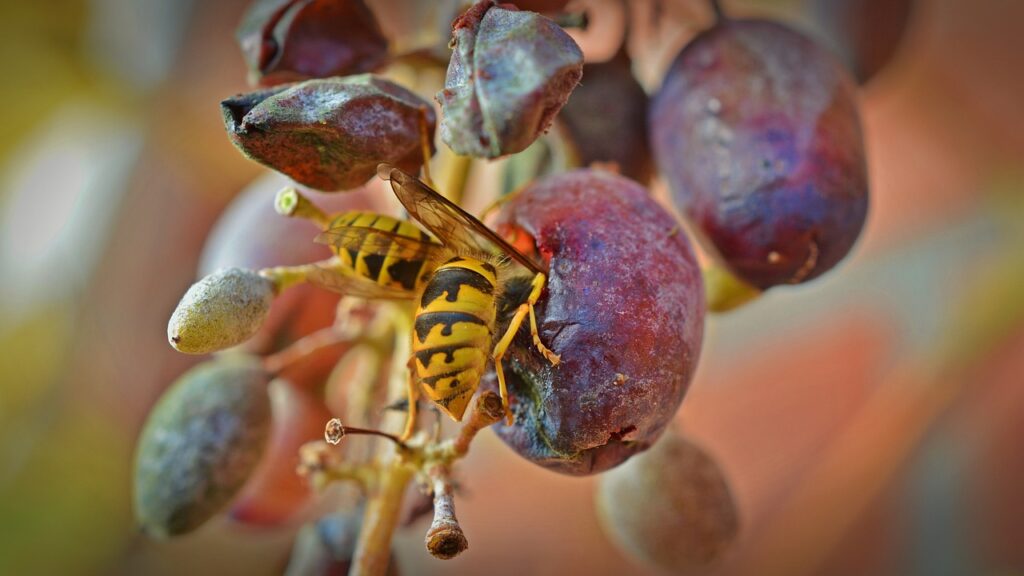
3. Fruit Protection Bags
Best for: Birds, slugs, snails, and insects like wasps
Fruit protection bags are so simple they almost look like they wouldn’t work. But I use fruit netting bags every season and they definitely have helped shelter some of my fruit from the attentions of hungry birds. I also place these baggies over my developing grapes so they don’t get swarmed by wasps!
Birds often peck at tomatoes and other fruit in search of water on hot summer days, which can leave tomato plants ravaged with holes. Adding a bird bath to gardens can help, but fruit protection bags offer a surer shield against hungry bird beaks (as well as slugs!) I’ve been reusing the same set of fruit protection bags for several seasons and they’ve held up quite well.
Tip: For a DIY solution, you can also make your own fruit protection bags out of tulle fabric or scraps of cut up row cover.
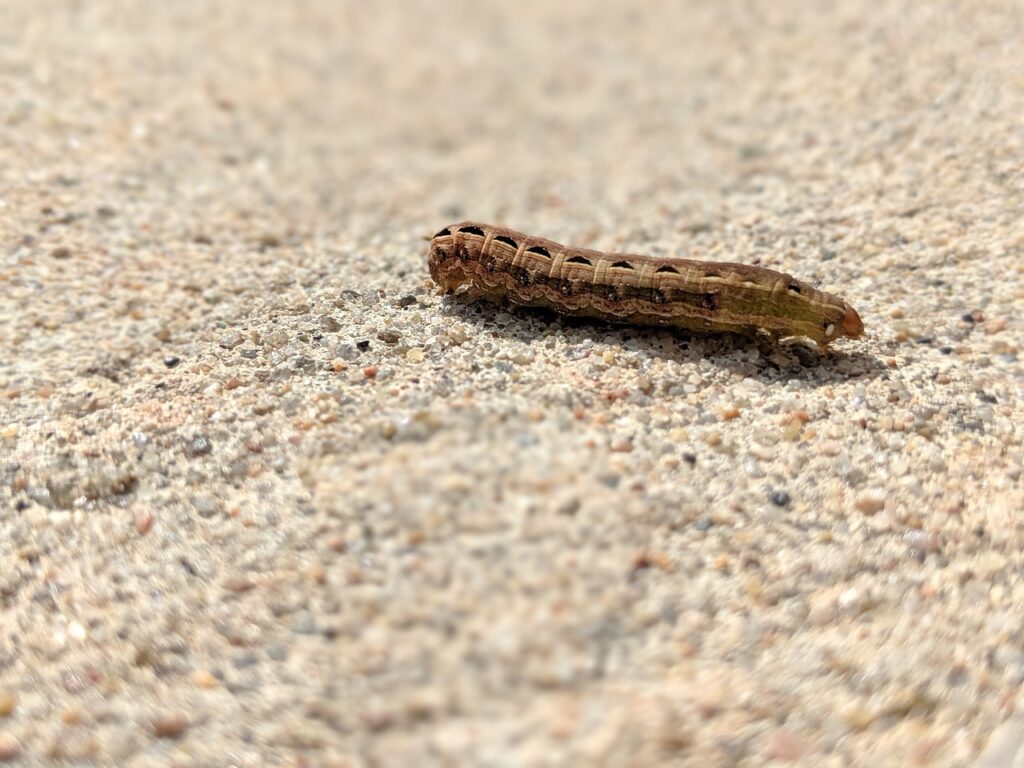
4. Plant Collars
Best for: Cutworms
Cutworms are caterpillars from various species of moths and they crawl along the soil line and nibble off tender seedling stems in spring. If you’ve ever had seedlings collapse overnight or appear to be cut off at the soil, you may have a cutworm problem. Luckily, these caterpillars can be thwarted by encircling plant stems with loose plant collars buried an inch or two beneath the soil line!
Tip: If you don’t want to purchase plant collars, you can make DIY collars with paper towel tubes cut down to size. Slice a slit in the side of each tube to make it easier to fit around delicate plant stems.
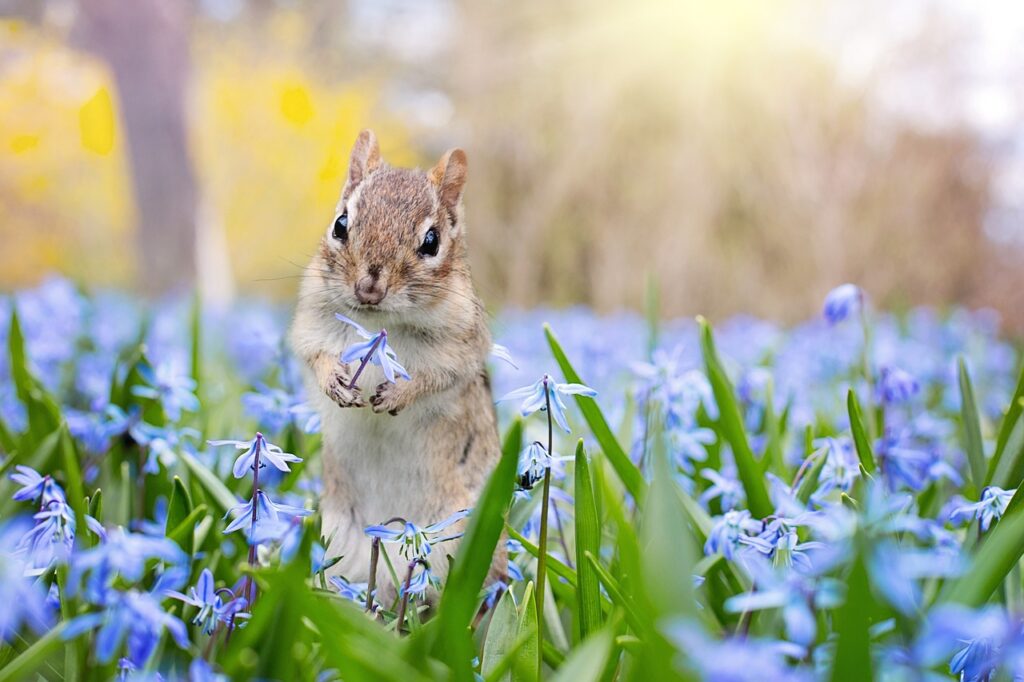
5. Bulb Cages
Best for: Rodents
I’ve personally lost a few dahlias to burrowing rodents, so I definitely know the frustration of planting bulbs (or tubers) and then having no flowers pop up in spring! Chipmunks, voles, and mice are the obvious suspects and they’ll feed on a wide range of ornamental bulbs, including gladioli, crocuses, and tulips. But if you enclose your bulbs in cages, sharp rodent teeth can’t do any damage and your bulbs should be able to grow just fine through the bulb cage holes.
Tip: Chicken wire loosely formed into a ball can also be used as a bulb cage. Just make sure you don’t enclose your bulbs too tightly… they need room to grow!
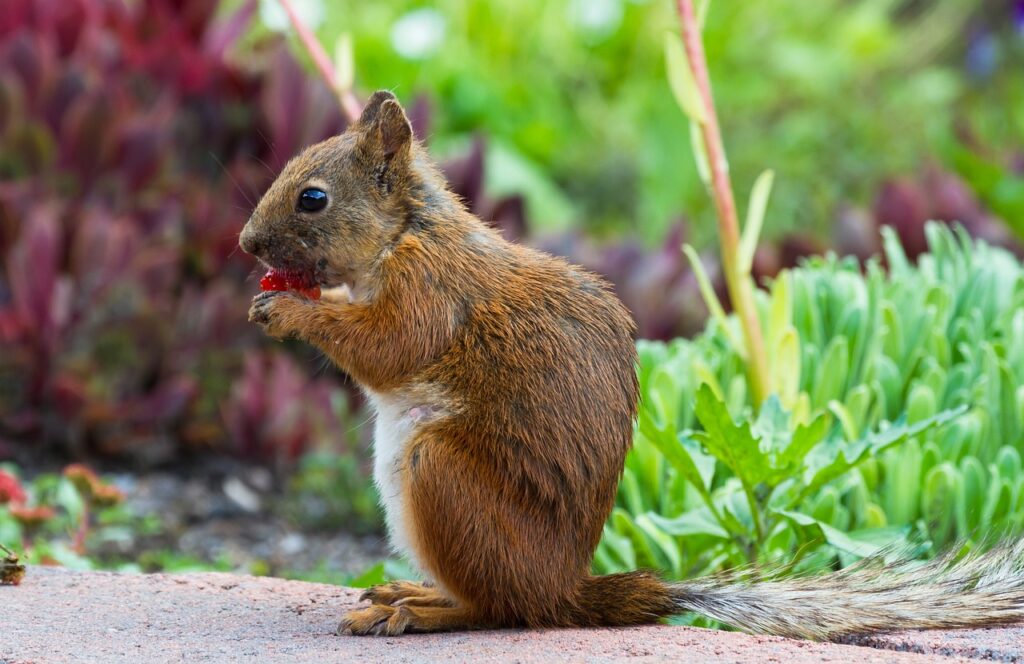
6. Cloches
Best for: Various pests, depending on cloche size and material
Cloches are often used for season extension, but they can also function as deterrents for birds, mammals, and insect pests. Depending on the plants you’re keeping, you can find cloches in different sizes and made of different materials. Plastic or glass cloches with solid sides work best for insect pests, while cloches made of wire can deter birds as well as browsing mammals (deer may be able to knock them over though!)
Tip: I’ve seen some inventive gardeners making cloches out of mesh trash cans from the dollar store. You can also make cloches out of clear plastic milk jugs. Just cut off the bottom and poke a few small air holes for ventilation.
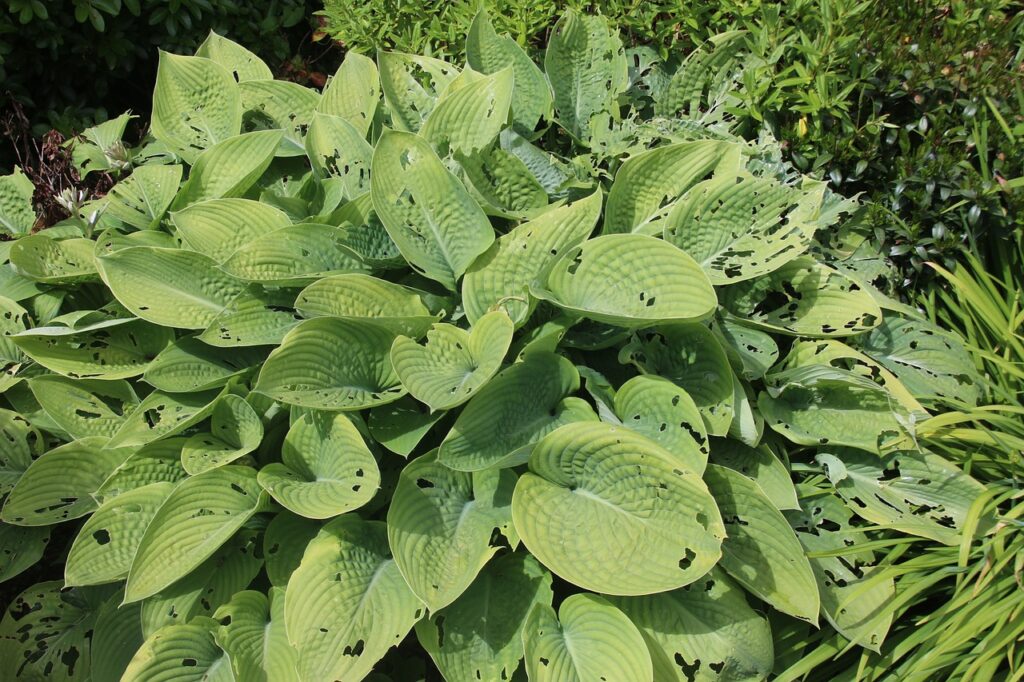
7. Copper Tape
Best for: Slugs and snails
Slugs and snails riddle plant leaves with holes and they’re particularly problematic on brassicas and hostas. But ringing raised beds and planters with copper tape for slugs has been shown to deter even these voracious eaters. Just be sure to use tape that’s wide enough as thin strips of copper tape don’t make effective barriers.
Tip: Copper tape works by reacting with the slug or snail mucus and causing a small shock to these pests as they crawl by. The shock is not fatal, but it’s usually enough to cause slugs and snails to crawl the other way!
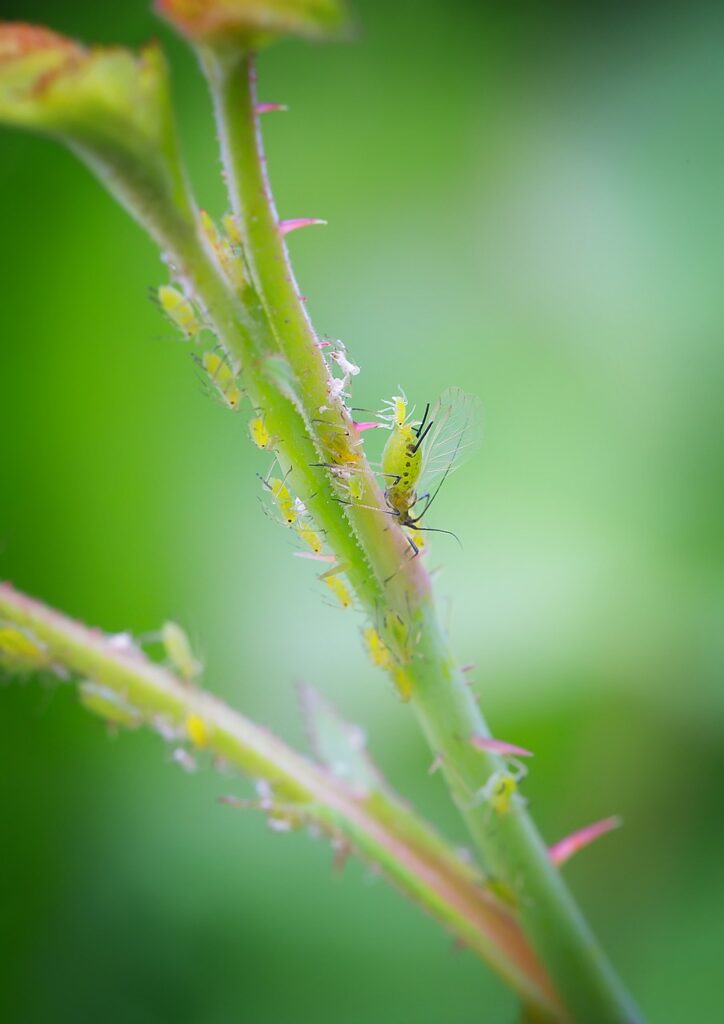
8. Sticky Traps
Best for: Small flying insects, like thrips, whiteflies, and sawflies
I personally only use sticky traps on indoor plants as I don’t want to accidentally capture non-target insects, but they are incredibly handy for fungus gnats. Sticky traps can also be amazingly useful in greenhouse settings where small, flying pests can spread fast. In gardens, sticky traps aren’t as damaging as pesticides, but they can still harm pollinators, so avoid placing them near flowers.
Tip: Sticky traps usually come in either blue or yellow. Yellow traps are said to attract a wide range of insects, while blue traps are said to be particularly useful for thrips.

9. Hardware Cloth
Best for: Burrowing animals, like voles and groundhogs
Hardware cloth is an all-purpose gardening material that can be used in so many ways. It can be used to create bulb cages for pest protection, but it’s especially handy for closing off the bottoms of raised bed gardens so burrowing mammals can’t dig their way in. I’ve had vole problems in the past, but they’ve left my root veggies alone since I’ve added hardware cloth to the bottoms of my beds!
Tip: Chicken wire is not as sturdy or durable as hardware cloth, so it is not the best option for enclosing raised bed garden bases. I personally used ¼ or ½” hardware cloth on my raised beds.
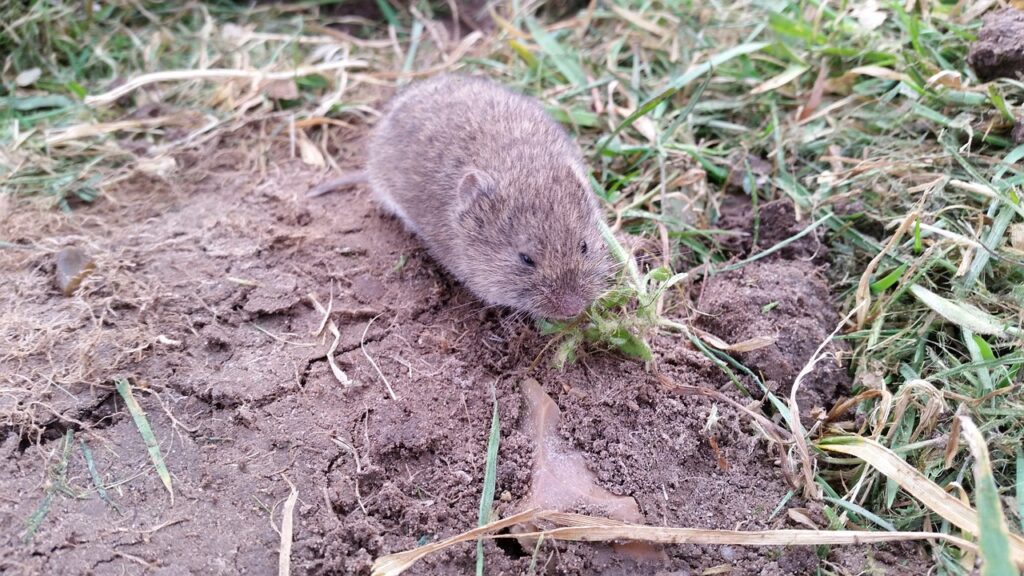
10. Grow Bags
Best for: Wireworms and voles
Fabric grow bags can be a great way to expand your garden space and grow deep rooted vegetable plants that don’t tolerate shallow soil. But grow bags can also be a good solution if your garden is plagued with vole or wireworm troubles. I’ve struggled with wireworms on my potato plants in the past, but I haven’t seen a single worm since I started growing my tubers in bags!
Tip: For an eco-friendly swap, you can also make grow bags out of upcycled feed bags!
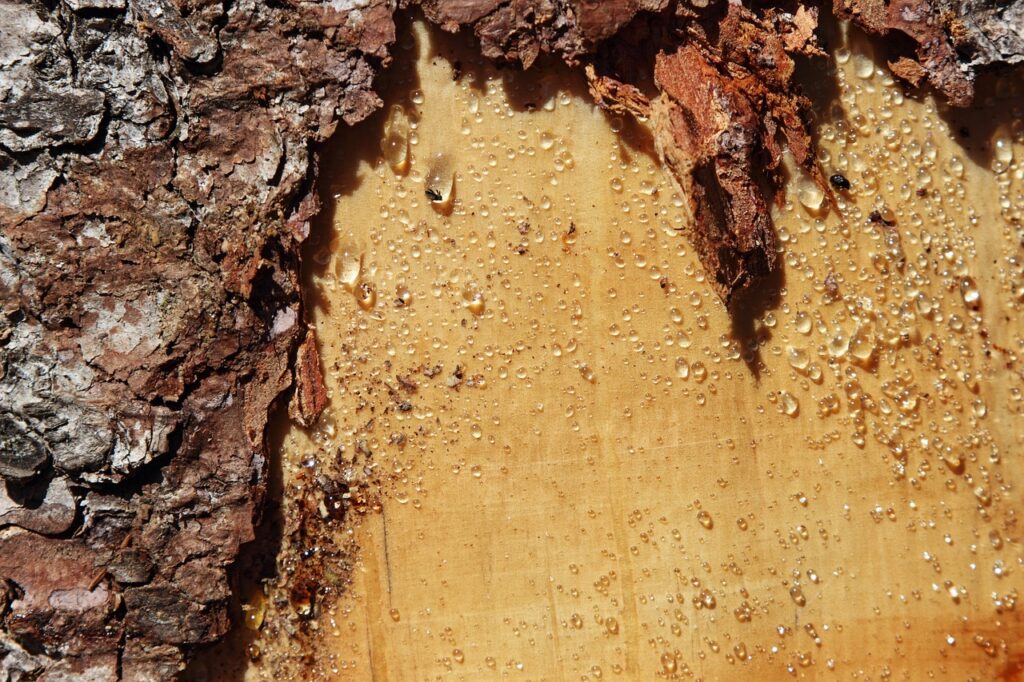
11. Tree Guards
Best for: Deer and rodents
Deer and rodents, like voles, often damage or kill young trees by girdling them, which is fancy-speak for stripping off the bark all the way around the tree trunk. These pests are generally most active during the winter months, but they can girdle trees at any time of the year. Installing tree guards around the base of young fruit trees and other ornamentals can protect your tree investment from even these hungry beasts, but be sure to install guards loosely so they don’t grow into the tree trunk and cause girdling too!
Tip: Avoid placing mulch directly against tree trunks. Not only does this promote rot, but it can also make it more likely that rodents will crawl around your trees and girdle them.
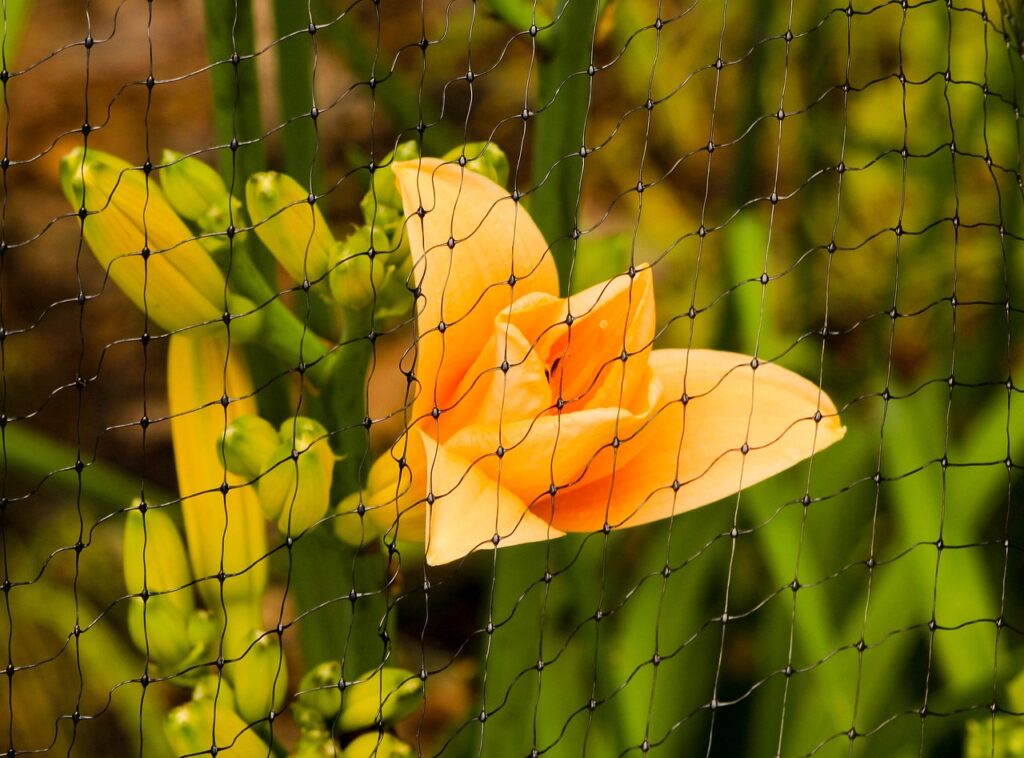
A Note About Bird Netting
While I love pest barrier products in general, I never recommend or use bird netting. This product is made from fine mesh that can easily ensnare bird wings and feet… but it can also prove deadly to other animals like foxes, rabbits, and neighborhood pets.
With all of the other pest control options on the market, I find that there are plenty of safer ways to prevent pests without relying on potentially hazardous netting. Fruit protection bags and row covers, for instance, provide the same basic protection as bird netting, but they don’t have as many loops or hazardous tangles. Tulle fabric is another option and it can be even less expensive!
Tip: Floating row cover or tulle with lots of holes should be replaced if possible. Even these products can become tangle hazards if they’re holey!
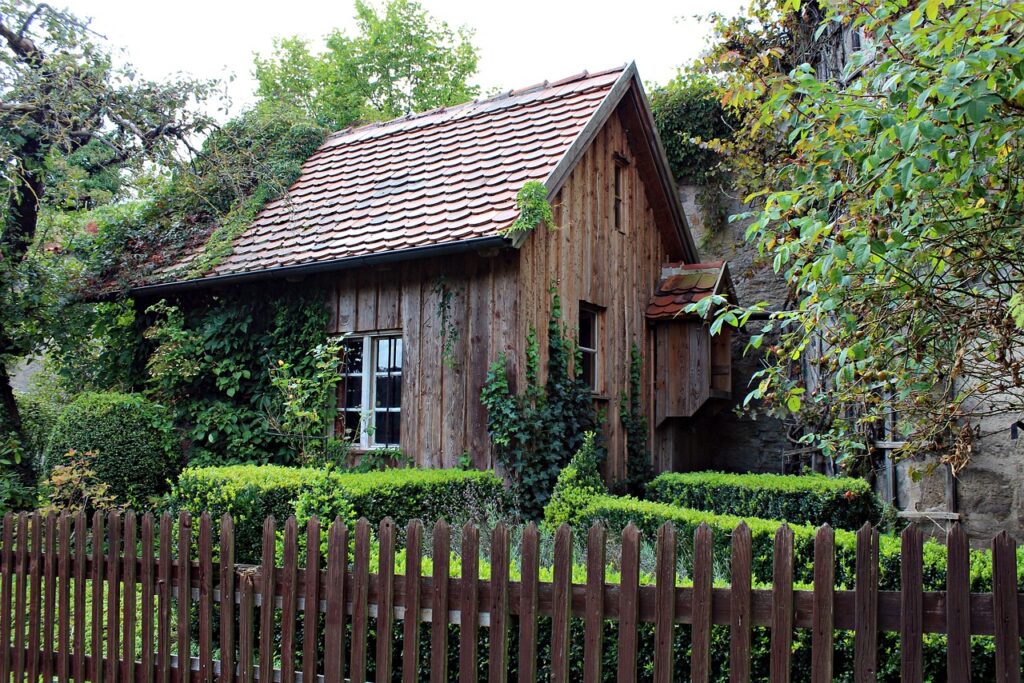
Frequently Asked Questions About Organic Pest Control
How do I pest proof my garden?
Using pest barriers is just one part of yard pest control. If you want to keep your garden and lawn pest-free, you can also grow pest-resistant plant cultivars, experiment with companion planting, rotate crops on a 3 to 5 year cycle and try out organic pest control products like organic insecticidal soap spray.
Does netting keep bugs out of garden?
Row cover netting can definitely keep certain bug species out of gardens, but it needs to be installed correctly. For best results, install row covers at the very beginning of the season, before pests are active and make sure your row covers are hole-free. To keep out crawling insects, anchor the base of row covers down with landscape staples or heavy objects like bricks and stones.
Do row covers prevent pollination?
One of the drawbacks of using row covers for natural pest control is that they can keep some plants from being pollinated and setting fruit. This isn’t an issue for plants like brassicas that don’t need to be pollinated to fruit, but it can cause issues for plants like squash and cucumbers that do require insect pollination. To avoid these problems, use row covers only on plants that don’t require insect pollination or peel back the covers briefly during the day to let pollinators in!
